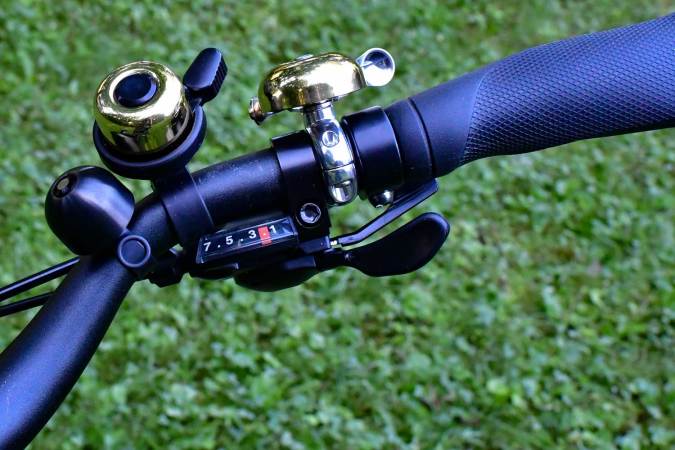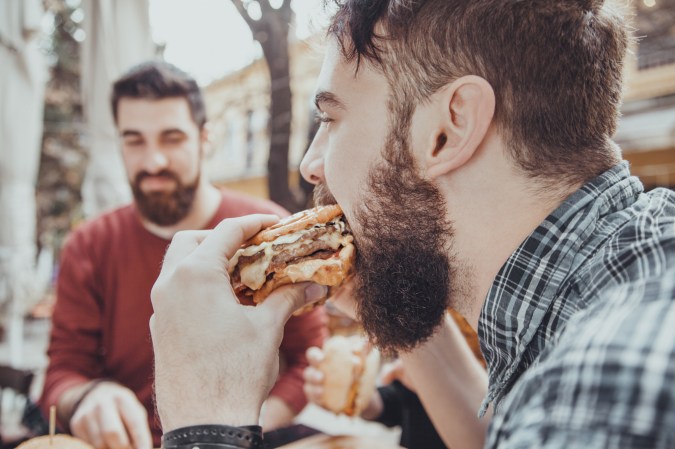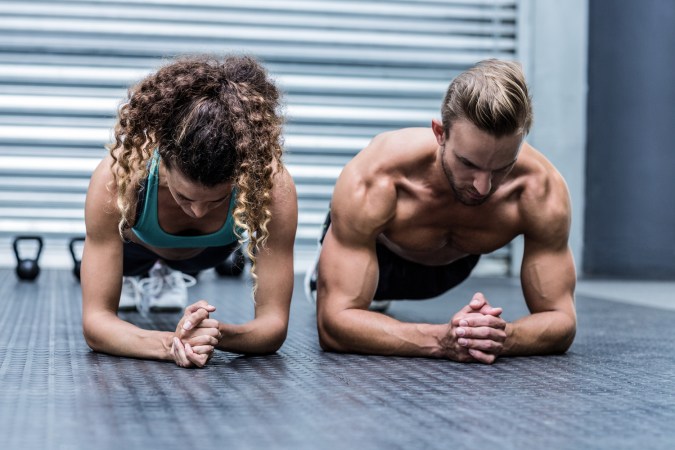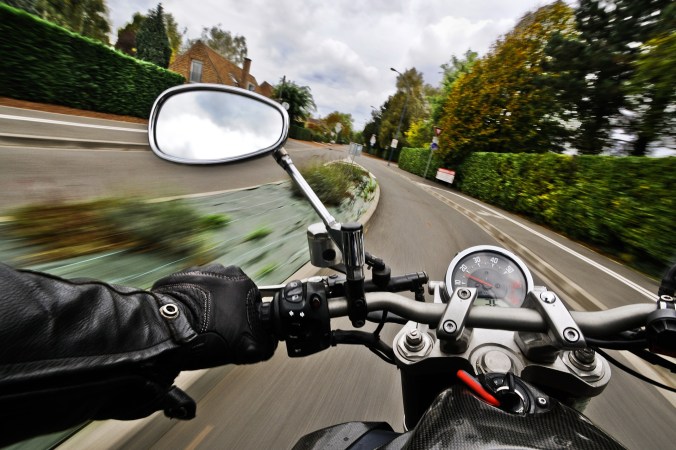

We could all stand to ride bikes a lot more. As a longtime city person and life-long pedestrian, I hadn’t thought about pedaling in years. In fact, the last time I got up on two wheels, it was a long, huffing, embarrassing struggle through the New England countryside that left me convinced my broad physique was ill-suited to cycling.
But after changing careers—which meant driving to an office for the first time in years—I recently rejoined the world of commuting. My hatred of driving, concerns about climate change, and the simple fact that I’m cheap led me to a 2015 study by Deloitte that found about 28.3 million people live close enough to their jobs to actually bike there. By doing so, they could save themselves a total of $7.7 billion in fuel and vehicle ownership costs in the process.
It wouldn’t just benefit bikers, either: thanks to millions fewer cars on the road, commuters nationwide would stand to save a total of $17.1 billion—and untold aggravation—due to reduced congestion. Biking also helps reduce the risk of cardiovascular problems, which year by year are most likely to put us in an early grave.
In short, I could combine my commute with my morning workout and save a bunch of money, too. But, getting back into cycling after nearly 15 years away is a bit more complicated than just, uh, riding a bike.
Safety first

First lesson: Get a helmet. A 2018 survey found helmet-wearing reduced fatalities and serious injuries by 34%, serious head injuries by 60%, and traumatic brain injuries by 53%. The study also proved helmets are particularly important in “single-bike” crashes, i.e. wiping out on your bike—the kind of accident you’d most likely be involved in as a new rider (I ran into a fire hydrant on my first ride).
Look for a helmet that uses Multi-directional Impact Protection System, or MIPS—a technology involving two helmet layers that rotate separately in a crash, thus preventing your neck and head from being twisted by a hit. Don’t forget color, either: A brightly colored helmet will make you more visible and less likely to be run into. A good set of potent USB rechargeable lights on the front and back of your bike will also help you see and be seen when riding at night or in low light conditions.
Remember the rules of the road. Legally speaking, in 28 states and Washington, D.C., a bicycle is considered a motor vehicle. That means that, just like a good driver, you have to stop at signs and lights, signal directional changes, obey signage, and otherwise act like a responsible adult. That includes biking while sober. And not just for your safety or others’—you can be charged with drunken driving in many states if you ride a bicycle while drunk.
Bring a first aid kit—even minor spills can lead to road rash and other injuries. Just in my six months back riding, I’ve suffered from road rash on my knees and shins, thanks to having to go suddenly off-road due to a baby running across my path, plus some scratches and bruises from taking turns too fast into some solid objects.
Pack your kit with a range of adhesive bandages, including one large enough to cover your knee, gauze for cleaning minor wounds, antibiotic ointment, some sterile gloves or sanitary wipes, and a pain reliever. Always carry your phone with you, and invest in a protective case if you haven’t already—you won’t want to wait for the next jogger if you’ve broken a bone. You can also get pre-made kits with these elements from bike shops and online.
Take a repair class and bring some tools and spare parts when you head out. A good one will include a pump, a tire pressure gauge, and a set of hex wrenches. According to the experts, the most important skill you should know is how to fix a flat, because it’s easy to handle and happens to everyone eventually. Blown tubes, loose nuts and bolts, and other problems can take you off the road as well (or throw you onto it at high speed), so learning the basics will allow you to prevent accidents and get back on the saddle in no time.
Figure out what kind of bike you need

Your parents were likely the ones who got you your first bike, so your young self probably never realized just how many bikes are on the market and how bewildering and complicated buying one can be. Whether you want to take short cruises down the beach or haul everyone’s luggage home from the airport, there’s a bike for it.
Ask yourself what you’ll primarily be using your bike for, what roads you’ll be riding on, how far you plan to go on a regular basis, and what other considerations you have. For example, I would have preferred to get a bike with narrow tires and a light frame, but I needed one that would fold, as space in my apartment was at a premium. And since most folding bikes are designed for people far daintier than me, I had to get a folding mountain bike, with a heavier frame and wider tires.
It’s generally a good idea to start with a comfort hybrid, which will keep you in an upright position and be gentler on your back, says Susan McLucas, the founder and head teacher of the Bicycle Riding School. If you already have a mountain bike in mind, know that their straight handlebar makes the rider lean over quite a bit. The same is true of road bikes, which are designed for racing and force the rider’s body lower to be more aerodynamic.
Once you know what kind of bike you want, you can size yourself for it. Yes, bikes come in sizes, and much like clothes, that sizing isn’t standardized. One company’s large may be another’s double-extra-large. If possible, head to a bike shop and get a custom fitting. Otherwise, refer to manufacturers’ size charts (generally tied to your height), to determine which bike will fit you.
Buying a used bike is much like buying a used car. Tom Gemelli, a staff member at the Somerville Bike Kitchen, a community organization in Somerville, Massachusetts, that provides free tools and workspace for the community to repair and upgrade their bikes, explains what you should look for when getting one: “Check the weight-bearing surfaces, like the seats and the wheels. Get on [the bike] and listen to see if it’s smooth and quiet.” He also recommends checking the seat posts, handlebars, and other adjustable pieces to make sure you can actually move them.
Avoid or replace galvanized steel parts. This type of steel, which is usually coated with zinc, rusts quickly when exposed to salt water. If it’s been used for your brake cables, the whole system could be compromised. You can spot galvanized steel by feel, as it usually has a rough texture. You can also check parts for drip marks caused when the steel was dipped in zinc. Don’t do what I did, and wonder why the parts of the bike you sweat over the most—like the washers around the nuts in my frame, and the pin that holds my bike together—are suddenly rusting.
If you have a hard time finding exactly what you want, don’t forget most bikes are customizable. Bike shops will swap out tires, wheels, saddles, handlebars, and other parts. If you’re handy with a hex wrench, you can do it all yourself. Just keep in mind that if you’re not sure what you’re doing, seek the help of someone who does—a badly installed handlebar or front wheel could result in a nasty crash.
Getting on the road

A lot of people give up on biking because something bad happens, and the longer it’s been, the more time a traumatic event has to root itself deep into your head, McLucas says. We simply get used to the idea that biking is scary. If you’ve got a mental hump to get over, ask yourself what would make you more comfortable, both in terms of location—maybe you’re afraid of riding in traffic—and of how long you ride.
Once you’re ready to pedal, start by going a few miles at a time on bike trails or quiet side streets with little traffic. These short rides will be trial runs for both your bike and your body. Every bike has its own quirks, and you’ll either need to get used to them or adjust your bike.
For example, somebody who was totally not me at all might ride their bike in a high gear and wonder why they’re so out of shape when they do so well on the stationary bike. If only they’d bothered to look up how the gearing works. Someone else who is also definitely not me might not have considered that part of riding a bike is keeping your balance on it, which uses entirely different muscles from an exercise bike and requires that you keep up momentum, especially on hills. I absolutely, 100%, don’t have experience with this, but that might lead to them running into a bush. The key is to stick with it. “The main thing that builds confidence is success,” McLucas says.
You may also find that as you ride longer distances, certain parts of your body will need more cushioning than others. Saddles, in particular, are decidedly not one-size-fits-all, as everybody has a different ischial tuberosity, or, in other words, everyone’s butt is different. How you sit determines your weight distribution. Handlebar placement also matters: the higher up the handlebars are, the more upright you’ll sit. A more upright position can also take some pressure off your hands, which can tingle or go numb if you’re tightly gripping the handlebars or using your arms to keep yourself upright while riding.

Dress comfortably and make sure your outfit won’t get tangled in the wheels, brakes, or the crankshaft. Pants should be tight around the calf and ankles to prevent cuffs from getting tangled in the chain. It’s recommended that skirts stay at about knee length or above. If you want to ensure your clothes continue to cover everything you want covered, use a light weight like a binder clip at the hem, or a hair tie and a coin to turn a skirt into shorts.
For that last trick, just press the coin against the back of your skirt, somewhere between your legs, until you see its outline against the front of your skirt. Then wrap the hair tie around the fabric, “buttoning” the front and back of your skirt together.
Wear bright colors during the day, and if you’re biking at night, wear high-visibility vests or other pieces of clothing.
Don’t forget to bring water and snacks with you, especially as you go on longer rides or start riding to and from errands. While the precise amount of calories you burn depends on a number of factors—like terrain, speed, and your weight—you’ll burn a lot of them and you’ll start to lose energy after about an hour if you don’t fuel up.
Once you’re using your bike regularly, develop a maintenance schedule. Clean your bike with rags and lubricate the chain and other parts at least once a week, keep the tire tubes properly inflated and periodically check their air pressure. Go over your bike with a hex wrench set and make sure your nuts and bolts are tight, as well. And if you have to remove a part, especially your wheels, take note of how they’re attached. For example, as I learned the hard way, if your front wheel is removable and you take it off to check the pin, you may put it back the wrong way, which means the brake disc will be on the wrong side, away from your pads, which is exciting to discover when you start going down a hill.
But once you’re comfortable with your bike, you’ll see your community in a new light. Forty-eight percent of the trips we take by car are of three miles or less and are just as easily done on a bike. I’ve explored more of my community on my bike in the last six months than I had in a decade. Riding a bike shrinks the distance between you and the place where you live, and that’s just as rewarding as the exercise you get or the carbon you save.














